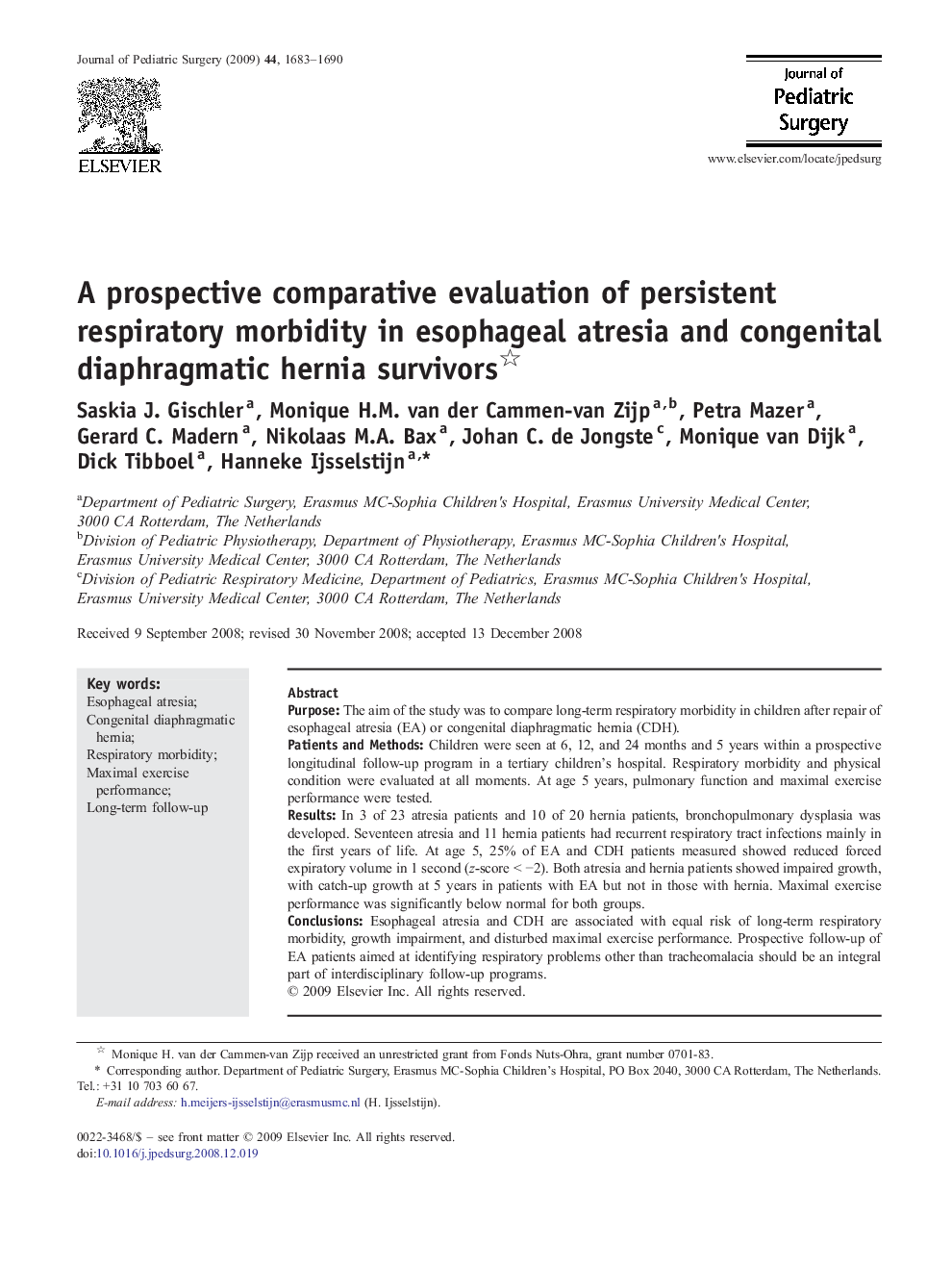| Article ID | Journal | Published Year | Pages | File Type |
|---|---|---|---|---|
| 4159068 | Journal of Pediatric Surgery | 2009 | 8 Pages |
PurposeThe aim of the study was to compare long-term respiratory morbidity in children after repair of esophageal atresia (EA) or congenital diaphragmatic hernia (CDH).Patients and MethodsChildren were seen at 6, 12, and 24 months and 5 years within a prospective longitudinal follow-up program in a tertiary children's hospital. Respiratory morbidity and physical condition were evaluated at all moments. At age 5 years, pulmonary function and maximal exercise performance were tested.ResultsIn 3 of 23 atresia patients and 10 of 20 hernia patients, bronchopulmonary dysplasia was developed. Seventeen atresia and 11 hernia patients had recurrent respiratory tract infections mainly in the first years of life. At age 5, 25% of EA and CDH patients measured showed reduced forced expiratory volume in 1 second (z-score < −2). Both atresia and hernia patients showed impaired growth, with catch-up growth at 5 years in patients with EA but not in those with hernia. Maximal exercise performance was significantly below normal for both groups.ConclusionsEsophageal atresia and CDH are associated with equal risk of long-term respiratory morbidity, growth impairment, and disturbed maximal exercise performance. Prospective follow-up of EA patients aimed at identifying respiratory problems other than tracheomalacia should be an integral part of interdisciplinary follow-up programs.
